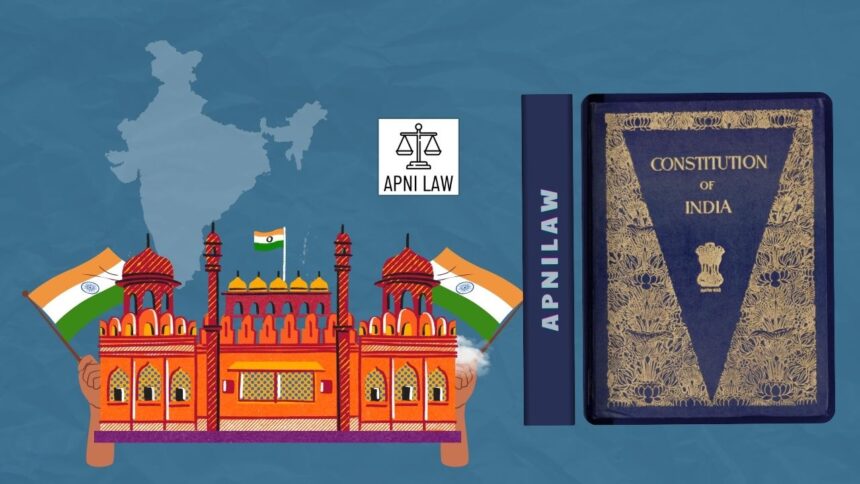The Indian Constitution is a dynamic framework designed to balance continuity with change. It is not a rigid document that resists modification, nor is it too flexible to be altered at will. Instead, the Constitution offers a carefully structured process of amendment. This ensures that necessary reforms can take place while protecting the core principles of the nation. Article 368 lays down the procedure for most constitutional amendments, but not all provisions fall under its scope. Broadly, amendments can be classified into three types: by simple majority, by special majority, and by special majority with the consent of half of the states. This classification reflects the importance of different provisions and the degree of consensus required to alter them.
The Rationale for Different Amendment Methods
The framers of the Constitution recognized India’s vast diversity and complex federal structure. They wanted a Constitution that would adapt to future needs but also resist rash or politically motivated changes. Therefore, they devised three different procedures of amendment. Less significant matters could be changed easily through a simple majority, just like ordinary laws. More critical provisions, such as Fundamental Rights and Directive Principles, required a special majority to ensure broad political support. Finally, amendments that touched the federal balance between the Union and the states demanded the additional approval of at least half the state legislatures. These three categories together reflect the balance between flexibility and rigidity that characterizes the Indian Constitution.
Amendments by Simple Majority
Certain provisions of the Constitution can be amended by a simple majority in Parliament. A simple majority means more than fifty percent of the members present and voting in each House. These amendments are outside the scope of Article 368. Instead, they are treated as ordinary legislative measures. The purpose of this category is to deal with routine or less controversial matters.
Examples include the admission or formation of new states, alteration of the boundaries or names of states, and the creation or abolition of legislative councils in states. Salaries and allowances of Members of Parliament, judges, or other constitutional functionaries can also be changed by simple majority. The Second Schedule of the Constitution, which deals with these financial matters, falls in this category. Such provisions are deliberately kept flexible to allow Parliament to respond quickly to administrative needs and political demands.
A famous instance of this method was the reorganization of states in 1956. The Parliament used its powers to redraw boundaries and create new states based on linguistic and cultural identities. This change was monumental, but it did not require a special majority because it was considered part of India’s political reorganization rather than a structural change to the Constitution.
Amendments by Special Majority
Most constitutional amendments fall under this category. A special majority requires two separate conditions. First, a majority of the total membership of each House must support the amendment. Second, two-thirds of the members present and voting must also approve it. This dual requirement makes it harder to pass such amendments, ensuring that only provisions enjoying a wide consensus are changed.
Fundamental Rights, Directive Principles of State Policy, and most other substantive provisions of the Constitution can only be altered through a special majority. For example, the 86th Amendment of 2002, which made free and compulsory education a Fundamental Right under Article 21A, required a special majority. Similarly, the 42nd Amendment of 1976, known as the “mini-Constitution,” also used this procedure to make sweeping changes. This included adding the words “socialist” and “secular” to the Preamble.
The Supreme Court has played a critical role in regulating amendments passed through this method. In the Kesavananda Bharati case of 1973, the Court held that Parliament cannot alter the basic structure of the Constitution, even by using the special majority procedure. Later judgments in Indira Gandhi v. Raj Narain and Minerva Mills reinforced this limitation. Thus, while Parliament enjoys broad powers, the judiciary ensures that the spirit of the Constitution remains intact.
Amendments by Special Majority with States’ Consent
The third type of amendment deals with provisions that affect the federal structure of the Constitution. India, though a union of states, preserves federal principles by sharing powers between the Union and the states. Any change to this balance requires the approval of the states. Therefore, for amendments in this category, Parliament must not only pass the Bill by a special majority but also secure ratification from at least half of the state legislatures. States give their approval by a simple majority vote in their assemblies.
Provisions requiring this procedure include the election of the President, the distribution of legislative powers between the Union and states, changes in the Union and State Lists in the Seventh Schedule, and the representation of states in Parliament. Similarly, changes in the powers and organization of the Supreme Court and High Courts also need this type of amendment.
For example, the 101st Amendment of 2016 introduced the Goods and Services Tax (GST). This amendment drastically changed fiscal federalism by merging multiple state and central taxes into a single nationwide system. Since it affected both the Union and the states, ratification by more than half of the states was mandatory. The amendment came into effect only after state legislatures gave their consent.
Interestingly, the Constitution does not impose a time limit on states for ratification. However, presidential assent can only be given once at least half of the states have ratified the Bill. This ensures that states cannot be bypassed in matters affecting their interests, thereby strengthening cooperative federalism.
The Importance of Safeguards in the Amendment Process
The existence of three amendment procedures ensures that constitutional flexibility does not lead to instability. By dividing amendments into categories, the Constitution safeguards its most important provisions while allowing easy changes to less significant ones. The special majority requirement prevents a temporary parliamentary majority from altering core values. The need for state ratification protects the federal nature of the Constitution. At the same time, the simple majority procedure keeps the system responsive to routine political and administrative needs.
Judicial Limitations on Amendments
Although Article 368 gives Parliament the authority to amend the Constitution, judicial review acts as a safeguard. The basic structure doctrine, developed in Kesavananda Bharati, remains the most important check. Features such as the supremacy of the Constitution, secularism, democracy, judicial review, and separation of powers cannot be destroyed. Even a unanimous vote in Parliament and ratification by all states cannot override this doctrine. This ensures that India’s Constitution evolves without losing its fundamental identity.
Examples Across Categories
Historical examples highlight the operation of all three categories. The 7th Amendment of 1956, reorganizing states, was passed by simple majority. The 73rd and 74th Amendments of 1992, which introduced Panchayati Raj and urban local bodies, required special majority. The 101st Amendment of 2016 on GST required both special majority and state ratification. Together, these examples show how the Constitution adapts to political, social, and economic changes while respecting its federal and democratic principles.
For any specific query call at +91 – 8569843472
Conclusion
The Indian Constitution provides three distinct types of amendments: by simple majority, by special majority, and by special majority with state consent. Each method reflects the significance of the provisions being altered. Simple majority amendments deal with routine matters. Special majority amendments protect essential provisions like Fundamental Rights. Amendments involving states preserve the federal character of the Constitution. The basic structure doctrine ensures that no amendment undermines the identity of the Constitution. Through this layered system, India maintains a balance between flexibility and stability. The amendment process continues to be one of the key features that makes the Constitution a living, evolving, and enduring document.








